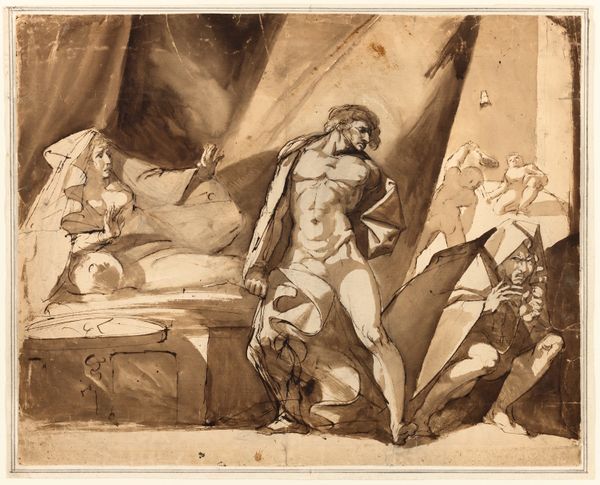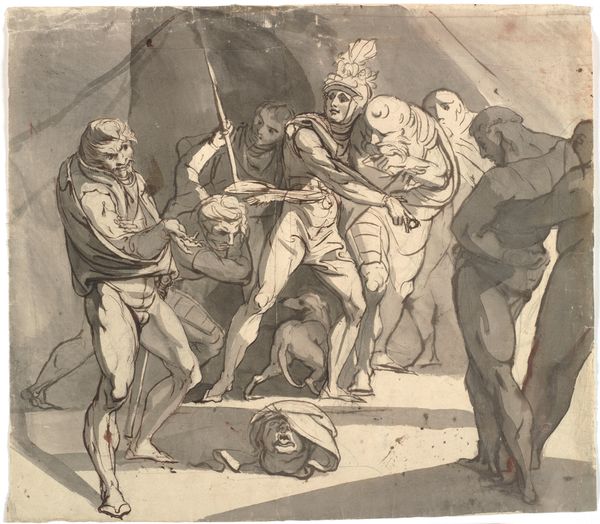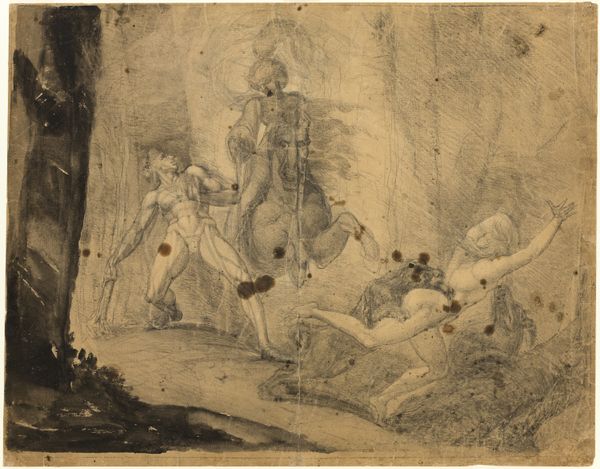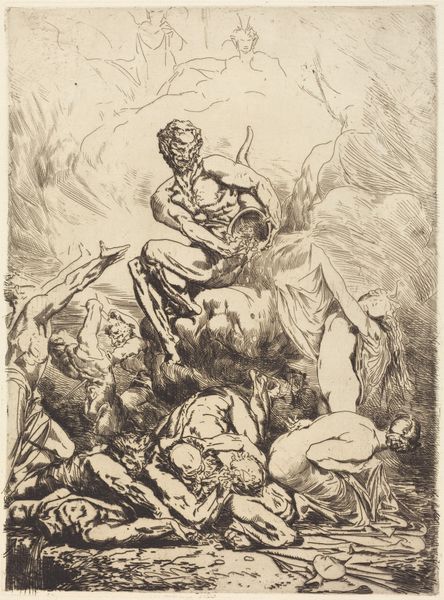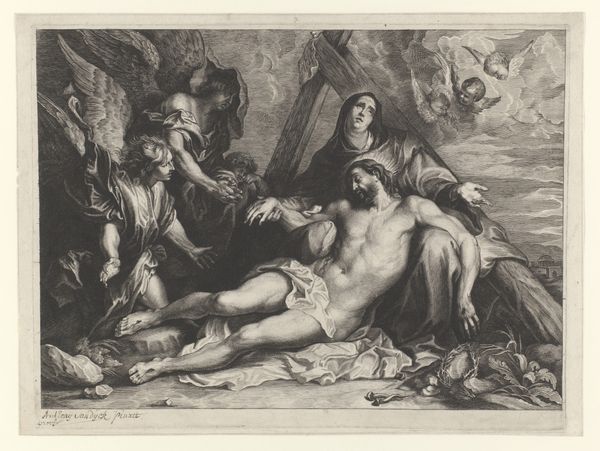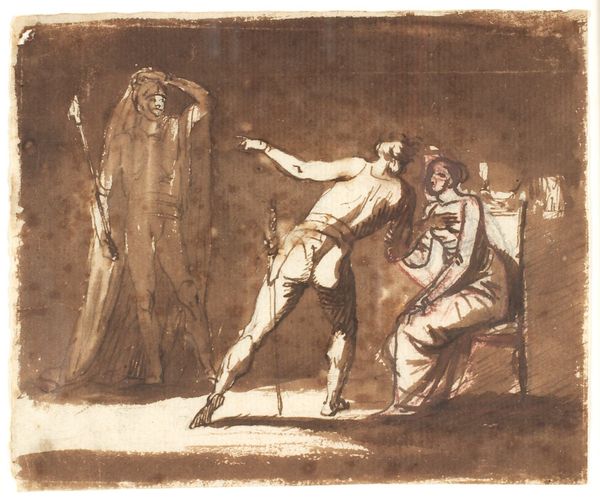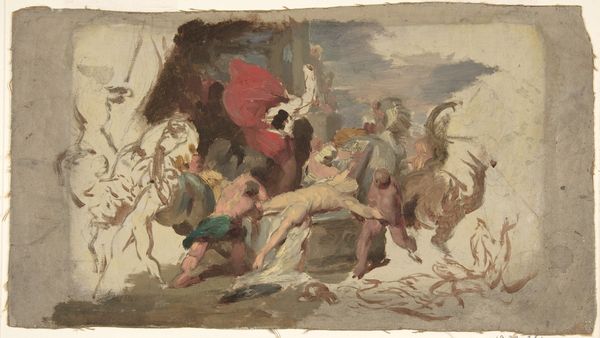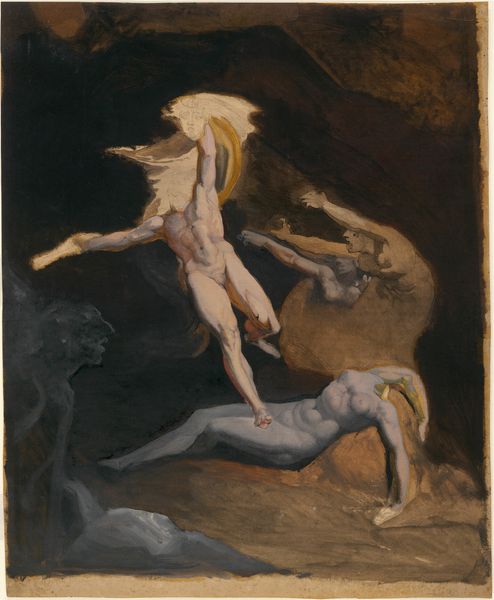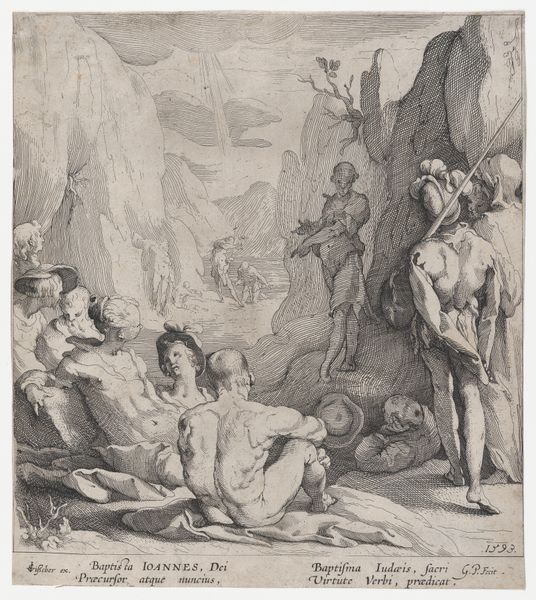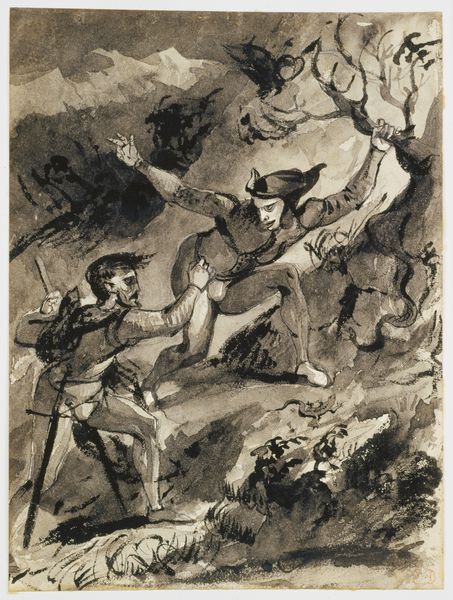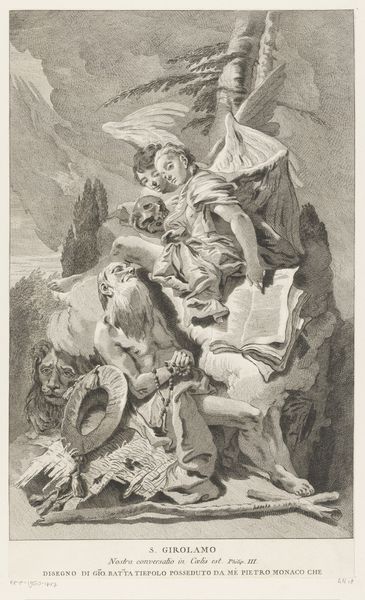
Dimensions: 331 × 504 mm
Copyright: Public Domain
Curator: Immediately striking is the drama—a chiaroscuro that practically bleeds off the paper. It’s incredibly unsettling, a potent vision of human suffering. Editor: Indeed. What we’re viewing is Henry Fuseli’s "The Cave of Despair," dating back to approximately 1769. Crafted with pen, ink, charcoal, and gouache on paper, it’s a compelling example of his early Romantic style, housed here at the Art Institute of Chicago. Curator: Romantic, certainly. The melodrama is ramped up. The cavern's rough textures and stark contrasts in the material details—the smooth armor versus the withered figure—all scream emotional intensity. Is there more than a purely emotional reading here? Editor: Absolutely. Fuseli, steeped in literary tradition, visually interprets Edmund Spenser's "The Faerie Queen". It is a deep dive into allegorical narratives—examining themes of hopelessness through the lens of Spenser's characters. Consider what Spenser does in the poem itself, connecting the despair and dejection with an experience of thwarted heroism. Curator: I see what you mean. Thinking intersectionally, Spenser and Fuseli’s heroic figures and the gendered dynamic within them, can be interrogated, right? It certainly speaks to historical perspectives on idealized manhood against a backdrop of social anxiety and questions of moral failure. Editor: That’s astute. Fuseli's manipulation of the different materials heightens the visual story, doesn’t it? The swift, almost violent application of ink and charcoal speaks to the intensity of production mirroring the artwork's subject, as well as his artistic freedom during the Romantic period. The materiality is inseparable from its political resonance. Curator: Examining the societal fabric threaded throughout art reveals how history profoundly informs what we see. And understanding artmaking—ink on paper, gesture—is a language of the moment. Editor: It underlines that our material world often echoes much larger societal concerns and narratives than what's evident on first viewing, doesn't it?
Comments
No comments
Be the first to comment and join the conversation on the ultimate creative platform.
